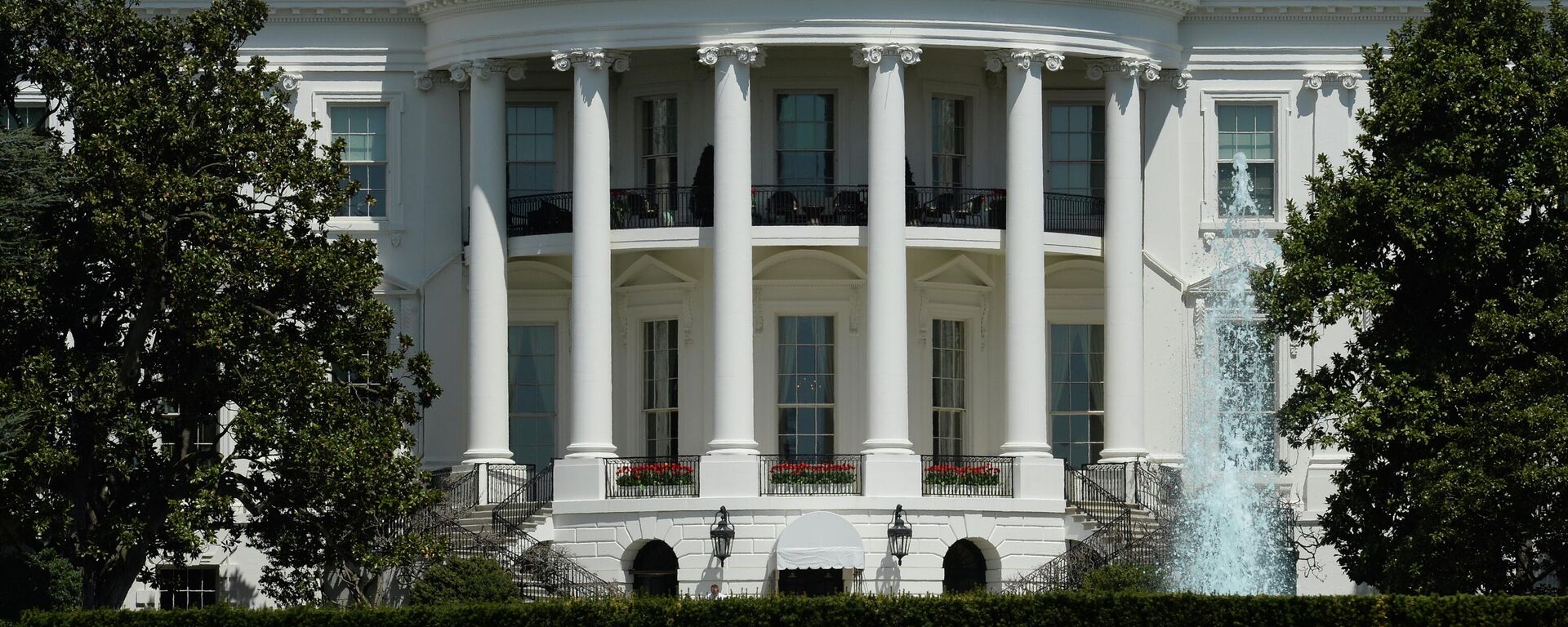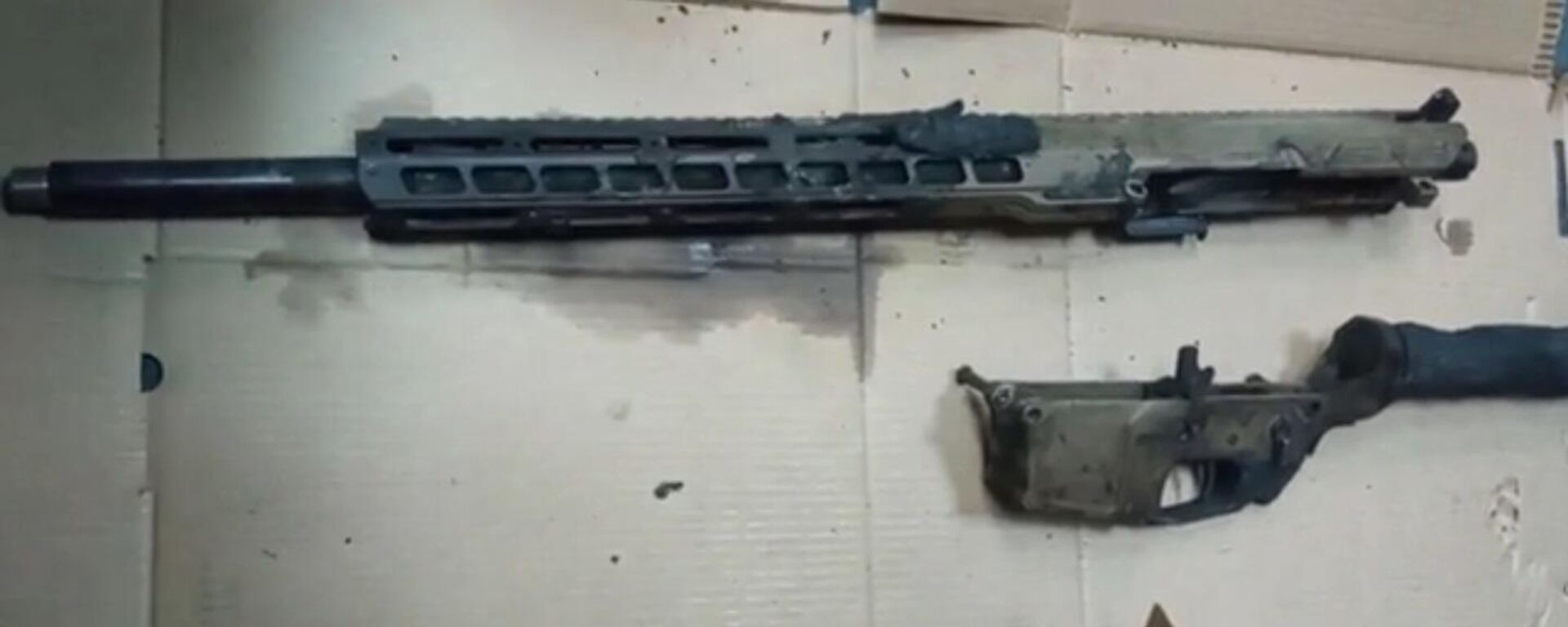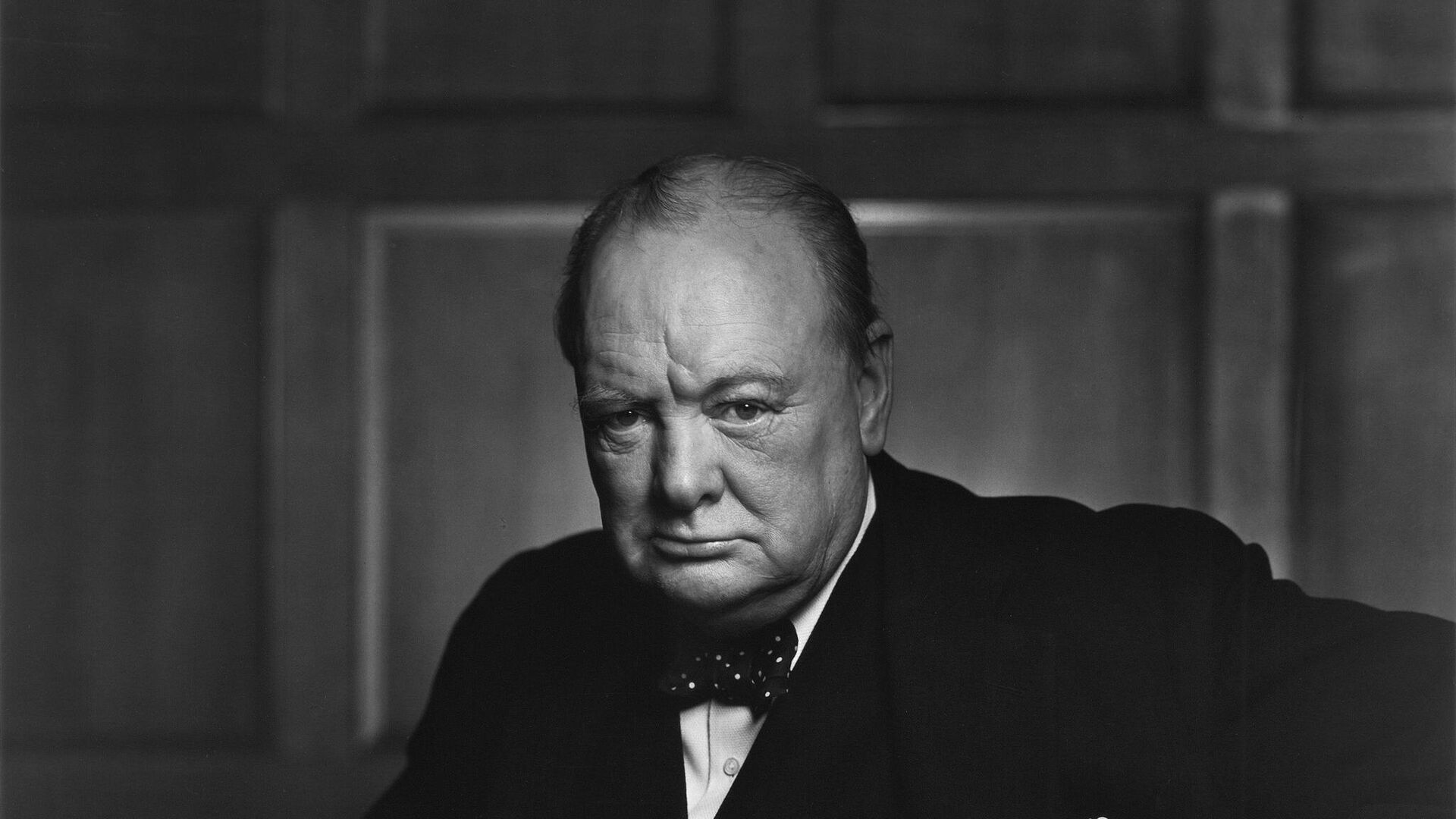https://sputnikglobe.com/20230305/churchills-iron-curtain-speech-in-perspective-1107974686.html
Churchill’s 'Iron Curtain' Speech in Perspective
Churchill’s 'Iron Curtain' Speech in Perspective
Sputnik International
On March 5, 1946, Winston Churchill arrived in the small town of Fulton, Missouri. 05.03.2023, Sputnik International
2023-03-05T09:00+0000
2023-03-05T09:00+0000
2023-03-05T09:00+0000
columnists
world
winston churchill
fulton speech
iron curtain
cold war
https://cdn1.img.sputnikglobe.com/img/07e6/08/18/1099943001_0:80:2048:1232_1920x0_80_0_0_db08e7debfcc18b9d4b56660fc041714.jpg
Some seven months earlier, Churchill had been voted out of the office of prime minister that he had held for the five most tumultuous years in the history of Great Britain, during which the UK contributed to defeat Nazi Germany. Churchill was accompanied by Harry Truman, the former Missouri senator who had served as President Franklin D. Roosevelt’s vice president until Roosevelt’s passing on April 12, 1945 propelled him into the role of America’s commander in chief. Truman had arranged for Churchill to receive an honorary degree from Westminster College, after which the famously loquacious English politician would deliver an address.The American president’s motivations were two-fold. First, he sought to lift the sagging spirits of a wartime ally whom he had only met in passing at the summit in Potsdam, Germany, in July-August 1945, after the surrender of Nazi Germany. Churchill had arrived in Potsdam distracted by the prospects of being voted out of office. He was deeply depressed, refusing to read the briefing documents his staff had prepared for him, resulting in lengthy and disjointed dialogue with his counterparts. Churchill’s fears were realized when, with the conference still in session, the results of the British elections were announced; Churchill had been defeated, and his place at the conference was taken over by the new British prime minister, Clement Attlee.Churchill took the defeat poorly, sinking further into depression as his health failed him, leaving him struggling to find his place in the world. He vacationed in France, where he spent hours painting. Upon his return to Great Britain, Churchill busied himself by working on his wartime memoir. Despite his defeat as prime minister, Churchill remained a member of Parliament, and as such he was a leader of the opposition. Politics was in his blood, and eventually the former prime minister began to reengage in the affairs of his nation, which included casting a critical eye towards post-war relations with the Soviet Union, whose leader at the time, Joseph Stalin, Churchill openly mistrusted.At the time Truman extended his invitation to Churchill, American policy toward its wartime ally, the Soviet Union, was in a flux. Stalin’s refusal to participate in the post-war dollar-dominated economy outlined in the 1944 Bretton Woods agreement was viewed by many as proof positive of the anti-Western proclivities of the Soviet Union. This posturing, when combined with angst over Soviet post-war policies in Poland, which both Truman and Churchill viewed as breaking with agreements reached during both the Yalta and Potsdam summits, had led to an overall environment of distrust and disengagement.A speech delivered by Joseph Stalin on February 9, 1946 sent shockwaves through the American public, driven by media accounts which lambasted the presentation as “warlike,” despite the fact that it almost exclusively addressed domestic matters. An American diplomat in Moscow, George Kennan, initially shrugged off Stalin’s address as being routine in nature. However, upon receiving instructions from the US State Department to provide a more detailed analysis of the speech and what it said about Soviet attitudes toward the West, Kennan proceeded to write an 8,000-word report which became known as “the long telegram.”The ”long telegram” was dispatched on February 22, and soon it became the talk of the town in Washington, DC. Churchill was in the United States vacationing in Florida when Kennan’s missive was written, and was subsequently invited to travel to the US Capitol to visit with Truman before heading to Fulton, Missouri. He was sequestered by the American president and his secretary of state, James F. Byrnes, to discuss the themes Churchill would present in his address. Both Truman and Byrnes were sensitive to the vagaries of American public opinion, which had not yet been turned against the Soviet Union and its leader, whom many Americans still considered an ally. By inviting Churchill to speak in Fulton, Truman hoped to use the famous Englishman’s oratory skills to his advantage, and help shape American attitude regarding the need for a more confrontational posture vis-à-vis the Soviet Union.Churchill did not disappoint. In a speech he titled “The Sinews of Peace,” Churchill outlined his vision of post-war reality, one where the US and the British Commonwealth enjoyed a “special relationship” designed to guide the international community in confronting the growing threat posed by the Soviet Union. In typical fashion, Churchill crafted words which graphically captured his sentiments, including the following sentence, “From Stettin in the Baltic to Trieste in the Adriatic, an iron curtain has descended across the Continent,” which introduced the term “iron curtain” into the lexicon of American discourse regarding the Soviet Union.The Iron Curtain speech, as it subsequently became known, was a defining moment in history, and has become known as the event which defined the start of what became known as the Cold War, an existential struggle defined more by ideology than force of arms between a Western world led by the “special relationship” between the US and Great Britain, and those lands ensconced behind the Iron Curtain that fell under the sway of the Soviet Union. Truman went on to use the themes set forth in Churchill’s speech and Kennan’s “long telegram” to craft a formal policy known as the Truman Doctrine, which was announced to the US Congress on March 12, 1947—nearly a year after Churchill’s landmark address. The policy announced as the primary goal of American policy the containment of Soviet power and influence around the world.And so began the Cold War, born from the confluence of one man’s depression, and another man’s indecision. The irony, however, is that the aggressive policy of containment, based as it was on military power, was not something Kennan was advocating for when he wrote the “long telegram.” Kennan did not believe the Soviet Union to be either expansionistic or militaristic in its approach toward the West and was appalled when the Truman Doctrine became policy.The policy journey that saw the “long telegram” transformed into the foundational doctrine of American containment policy, however, passed through Fulton, Missouri, where the words of Winston Churchill’s historic address served as an ideological forge, transforming Truman’s uncertainty over the state of relations with his erstwhile wartime ally into a stark determination to confront Soviet power which, thanks to Churchill, was subsequently deemed a threat to international peace and security.Today, the United States and its allies find themselves on the cusp of a new “Cold War” with Russia. Unlike the original, which was born of the nexus between Churchillian depression and Truman indecision which twisted the intellectual musings of an American diplomat into a doctrine of global confrontation, the current Cold War is the byproduct of deliberate actions by those in the so-called “collective West” who seek to hold onto the post-war world shaped by the containment policies that defined the Cold War by resurrecting the same irrational fears that had been generated under Truman.But the world was a different place during the original Cold War, defined by two different approaches toward global relations that were shaped by which side of the Churchillian Iron Curtain one resided. The United States and its allies were able to prevail for a number of reasons, including their ability to sow dissent within the ranks of the Soviet-dominated Eastern bloc, driving a wedge between Moscow and Beijing, and undermining Soviet influence and control over Eastern Europe.Today, the world isn’t defined by a bipolar West-versus-East reality, but rather a more complex, and highly nuanced multipolarity, where the United States’ continued adherence to Cold War mentalities places it at a disadvantage when dealing with a world that has, for the most part, moved on from the limitations imposed by any articulation of an Iron Curtain. Indeed, America’s continuing embrace of Churchillian concepts has transformed the “Iron Curtain” into a self-imposed prison, isolating the United States from a growing global reality where the American singularity, enhanced by a “special relationship” with the United Kingdom, no longer reigns supreme. The British stopped being relevant years ago, and the allure of America as the “shining city on the hill” has long since faded.The premise of the original Cold War was based upon a flawed perception of malign Soviet intent, the notion that Joseph Stalin was consolidating his power behind an ideological Iron Curtain until which time he could sortie forth and bring the rest of Europe, and by extension, the world, under his sway. Today, one can see the echoes of this Cold War mindset in the way so-called “Russia experts,” such as Michael McFaul and Fiona Hill, articulate the policies and posture of modern-day Russia and its leader, President Vladimir Putin. Just as a negative Soviet reaction to the global economic prescriptions of the Bretton Woods agreement led to George Kennan’s misinterpretation of Soviet intent, the Russian reaction to the expansion of NATO to its borders is likewise being misinterpreted—deliberately so—by McFaul, Hill, and others as a sign of Russian aggression.The main difference between the present and the past is the fact that despite its flawed intellectual foundation, the original containment policy assiduously avoided having the Cold War”transition into a “hot” conflict. Today, while historians and current affairs analysts debate whether the current state of affairs between the US and Russia qualifies as a new Cold War, the aggressive containment-based policies that are manifest in the expansion of NATO have morphed away from restraining Russia, to defeating Russia. As such, the Russian-Ukrainian conflict that has resulted from this aggressive expansion of NATO has transformed into a proxy “hot war” between Russia and the US-led NATO alliance, which is unlike anything experienced during the Cold War. As such, the current state of US-Russian relations is not defined by competing ideologies, but rather brute-force politics, where one side (the US) seeks the physical destruction of the other (Russia).This is the legacy of Churchill’s famous address, where Cold War rhetoric has transformed into post-Cold War conflict. The only good news is that US power and prestige today is but a shadow of what it was when the Cold War originated. Back then, the allure of US democracy marketed using the Bretton Woods-enhanced dollar-dominated global economy was real. Today, American democracy has been exposed as a flawed dream which, in many ways, manifests itself as a nightmare. The "Iron Curtain" has been transformed into an American “Rust Belt,” where the promise of the past has failed to meet the expectation of the present.The fact is, there will be no “Cold War 2.0,” if for the simple fact that the world will not allow it. Rather than enabling a modern-day variation of the Churchillian ideological divide envisioned in his Iron Curtain speech, the international community seems to prefer to resolve the differences between Russia and the collective West in a more deliberative fashion, choosing compromise over conflict.All that is needed is for the US-led collective West to recognize the reality of the world today, and drop the pretense of Cold War posturing built on Winston Churchill’s flawed and dated oration. Sadly, the ongoing tragedy that is unfolding in Ukraine today is proof positive that such a realization has yet to be reached. The consequences of this failure are real, and meaningful, and are propelling US-Russian relations on a trajectory which bypasses the niceties of Cold War containment, into the horrors of Hot War conflict.
https://sputnikglobe.com/20221012/white-house-unveils-new-security-strategy-saying-us-not-seeking-conflict-or-new-cold-war-1101775757.html
https://sputnikglobe.com/20221124/eastern-europe-arms-production-highest-since-cold-war-as-money-funneled-to-ukraine-1104662466.html
Sputnik International
feedback@sputniknews.com
+74956456601
MIA „Rosiya Segodnya“
2023
Scott Ritter
https://cdn1.img.sputnikglobe.com/img/07e6/0c/17/1105733958_0:0:334:334_100x100_80_0_0_b457e4e9c850ef224b0cc79059bb38df.jpg
Scott Ritter
https://cdn1.img.sputnikglobe.com/img/07e6/0c/17/1105733958_0:0:334:334_100x100_80_0_0_b457e4e9c850ef224b0cc79059bb38df.jpg
News
en_EN
Sputnik International
feedback@sputniknews.com
+74956456601
MIA „Rosiya Segodnya“
Sputnik International
feedback@sputniknews.com
+74956456601
MIA „Rosiya Segodnya“
Scott Ritter
https://cdn1.img.sputnikglobe.com/img/07e6/0c/17/1105733958_0:0:334:334_100x100_80_0_0_b457e4e9c850ef224b0cc79059bb38df.jpg
columnists, winston churchill, fulton speech, iron curtain, cold war
columnists, winston churchill, fulton speech, iron curtain, cold war
Some seven months earlier, Churchill had been voted out of the office of prime minister that he had held for the five most tumultuous years in the history of Great Britain, during which the UK contributed to defeat Nazi Germany. Churchill was accompanied by Harry Truman, the former Missouri senator who had served as President Franklin D. Roosevelt’s vice president until Roosevelt’s passing on April 12, 1945 propelled him into the role of America’s commander in chief. Truman had arranged for Churchill to receive an honorary degree from Westminster College, after which the famously loquacious English politician would deliver an address.
The American president’s motivations were two-fold. First, he sought to lift the sagging spirits of a wartime ally whom he had only met in passing at the summit in Potsdam, Germany, in July-August 1945, after the surrender of Nazi Germany.
Churchill had arrived in Potsdam distracted by the prospects of being voted out of office. He was deeply depressed, refusing to read the briefing documents his staff had prepared for him, resulting in lengthy and disjointed dialogue with his counterparts. Churchill’s fears were realized when, with the conference still in session, the results of the British elections were announced; Churchill had been defeated, and his place at the conference was taken over by the new British prime minister, Clement Attlee.
Churchill took the defeat poorly, sinking further into depression as his health failed him, leaving him struggling to find his place in the world. He vacationed in France, where he spent hours painting. Upon his return to Great Britain, Churchill busied himself by working on his wartime memoir. Despite his defeat as prime minister, Churchill remained a member of Parliament, and as such he was a leader of the opposition. Politics was in his blood, and eventually the former prime minister began to reengage in the affairs of his nation, which included casting a critical eye towards post-war relations with the Soviet Union, whose leader at the time, Joseph Stalin, Churchill openly mistrusted.
At the time
Truman extended his invitation to Churchill, American policy toward its wartime ally, the Soviet Union, was in a flux. Stalin’s refusal to participate in the
post-war dollar-dominated economy outlined in the 1944 Bretton Woods agreement was viewed by many as proof positive of the anti-Western proclivities of the Soviet Union. This posturing, when combined with angst over Soviet post-war policies in Poland, which both Truman and Churchill viewed as breaking with agreements reached during both the Yalta and Potsdam summits, had led to an overall environment of distrust and disengagement.
A speech delivered by Joseph Stalin on February 9, 1946 sent shockwaves through the American public, driven by media accounts which lambasted the presentation as “warlike,” despite the fact that it almost exclusively addressed domestic matters. An American diplomat in Moscow, George Kennan, initially shrugged off Stalin’s address as being routine in nature. However, upon receiving instructions from the US State Department to provide a more detailed analysis of the speech and what it said about Soviet attitudes toward the West, Kennan proceeded to write an 8,000-word report which became known as “the long telegram.”
The ”long telegram” was dispatched on February 22, and soon it became the talk of the town in Washington, DC. Churchill was in the United States vacationing in Florida when Kennan’s missive was written, and was subsequently invited to travel to the US Capitol to visit with Truman before heading to Fulton, Missouri. He was sequestered by the American president and his secretary of state, James F. Byrnes, to discuss the themes Churchill would present in his address. Both Truman and Byrnes were sensitive to the vagaries of American public opinion, which had not yet been turned against the Soviet Union and its leader, whom many Americans still considered an ally. By inviting Churchill to speak in Fulton, Truman hoped to use the famous Englishman’s oratory skills to his advantage, and help shape American attitude regarding the need for a more confrontational posture vis-à-vis the Soviet Union.
Churchill did not disappoint. In a speech he titled “The Sinews of Peace,” Churchill outlined his vision of post-war reality, one where the US and the British Commonwealth enjoyed a “special relationship” designed to guide the international community in confronting the growing threat posed by the Soviet Union. In typical fashion, Churchill crafted words which graphically captured his sentiments, including the following sentence, “From Stettin in the Baltic to Trieste in the Adriatic, an iron curtain has descended across the Continent,” which introduced the term “iron curtain” into the lexicon of American discourse regarding the Soviet Union.
The
Iron Curtain speech, as it subsequently became known, was a defining moment in history, and has become known as the event which defined the start of what became known as the Cold War, an existential struggle defined more by ideology than force of arms between a Western world led by the “special relationship” between the US and Great Britain, and those lands ensconced behind the Iron Curtain that fell under the sway of the Soviet Union. Truman went on to use the themes set forth in Churchill’s speech and Kennan’s “long telegram” to craft a formal policy known as the Truman Doctrine, which was announced to the US Congress on March 12, 1947—nearly a year after Churchill’s landmark address. The policy announced as the primary goal of American policy the containment of Soviet power and influence around the world.
And so began the Cold War, born from the confluence of one man’s depression, and another man’s indecision. The irony, however, is that the aggressive policy of containment, based as it was on military power, was not something Kennan was advocating for when he wrote the “long telegram.” Kennan did not believe the Soviet Union to be either expansionistic or militaristic in its approach toward the West and was appalled when the Truman Doctrine became policy.
The policy journey that saw the “long telegram” transformed into the foundational doctrine of American containment policy, however, passed through Fulton, Missouri, where the words of Winston Churchill’s historic address served as an ideological forge, transforming Truman’s uncertainty over the state of relations with his erstwhile wartime ally into a stark determination to confront Soviet power which, thanks to Churchill, was subsequently deemed a threat to international peace and security.
Today, the United States and its allies find themselves on the cusp of a new “Cold War” with Russia. Unlike the original, which was born of the nexus between Churchillian depression and Truman indecision which twisted the intellectual musings of an American diplomat into a doctrine of global confrontation, the current Cold War is the byproduct of deliberate actions by those in the so-called “collective West” who seek to hold onto the post-war world shaped by the containment policies that defined the Cold War by resurrecting the same irrational fears that had been generated under Truman.

12 October 2022, 16:07 GMT
But the world was a different place during the original
Cold War, defined by two different approaches toward global relations that were shaped by which side of the Churchillian Iron Curtain one resided. The United States and its allies were able to prevail for a number of reasons, including their ability to sow dissent within the ranks of the Soviet-dominated Eastern bloc, driving a wedge between Moscow and Beijing, and undermining Soviet influence and control over Eastern Europe.
Today, the world isn’t defined by a bipolar West-versus-East reality, but rather a more complex, and highly nuanced multipolarity, where the United States’ continued adherence to Cold War mentalities places it at a disadvantage when dealing with a world that has, for the most part, moved on from the limitations imposed by any articulation of an Iron Curtain. Indeed, America’s continuing embrace of Churchillian concepts has transformed the “Iron Curtain” into a self-imposed prison, isolating the United States from a growing global reality where the American singularity, enhanced by a “special relationship” with the United Kingdom, no longer reigns supreme. The British stopped being relevant years ago, and the allure of America as the “shining city on the hill” has long since faded.
The premise of the original Cold War was based upon a flawed perception of malign Soviet intent, the notion that Joseph Stalin was consolidating his power behind an ideological Iron Curtain until which time he could sortie forth and bring the rest of Europe, and by extension, the world, under his sway. Today, one can see the echoes of this Cold War mindset in the way so-called “Russia experts,” such as Michael McFaul and Fiona Hill, articulate the policies and posture of modern-day Russia and its leader, President Vladimir Putin. Just as a negative Soviet reaction to the global economic prescriptions of the Bretton Woods agreement led to George Kennan’s misinterpretation of Soviet intent, the Russian reaction to the expansion of NATO to its borders is likewise being misinterpreted—deliberately so—by McFaul, Hill, and others as a sign of Russian aggression.

24 November 2022, 16:46 GMT
The main difference between the present and the past is the fact that despite its flawed intellectual foundation, the original containment policy assiduously avoided having the Cold War”transition into a “hot” conflict. Today, while historians and current affairs analysts debate whether the current state of affairs between the US and Russia qualifies as a new Cold War, the aggressive containment-based policies that are manifest in the expansion of NATO have morphed away from restraining Russia, to defeating Russia. As such, the Russian-Ukrainian conflict that has resulted from this aggressive expansion of
NATO has transformed into a proxy “hot war” between Russia and the US-led NATO alliance, which is unlike anything experienced during the Cold War. As such, the current state of US-Russian relations is not defined by competing ideologies, but rather brute-force politics, where one side (the US) seeks the physical destruction of the other (Russia).
This is the legacy of Churchill’s famous address, where Cold War rhetoric has transformed into post-Cold War conflict. The only good news is that US power and prestige today is but a shadow of what it was when the Cold War originated. Back then, the allure of US democracy marketed using the Bretton Woods-enhanced dollar-dominated global economy was real. Today, American democracy has been exposed as a flawed dream which, in many ways, manifests itself as a nightmare. The "Iron Curtain" has been transformed into an American “Rust Belt,” where the promise of the past has failed to meet the expectation of the present.
The fact is, there will be no “Cold War 2.0,” if for the simple fact that the world will not allow it. Rather than enabling a modern-day variation of the Churchillian ideological divide envisioned in his Iron Curtain speech, the international community seems to prefer to resolve the differences between Russia and the collective West in a more deliberative fashion, choosing compromise over conflict.
All that is needed is for the US-led collective West to recognize the reality of the world today, and drop the pretense of Cold War posturing built on Winston Churchill’s flawed and dated oration. Sadly, the ongoing tragedy that is unfolding in Ukraine today is proof positive that such a realization has yet to be reached. The consequences of this failure are real, and meaningful, and are propelling US-Russian relations on a trajectory which bypasses the niceties of Cold War containment, into the horrors of Hot War conflict.







